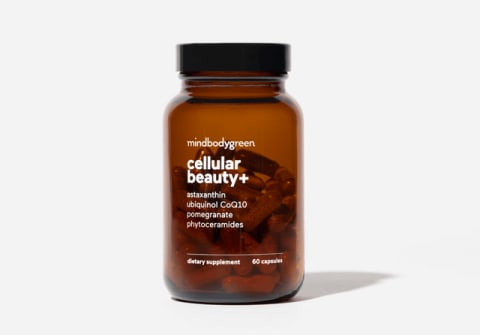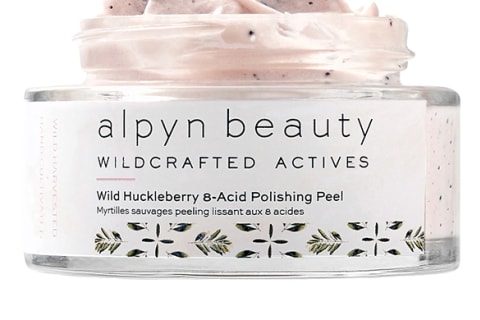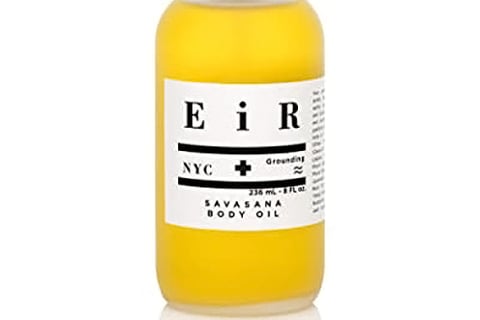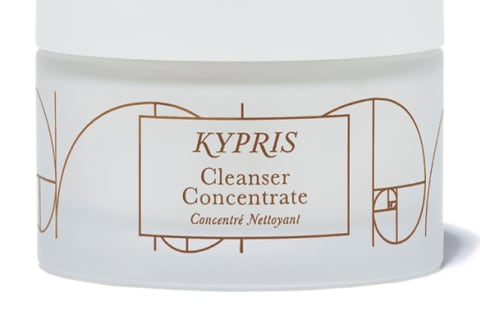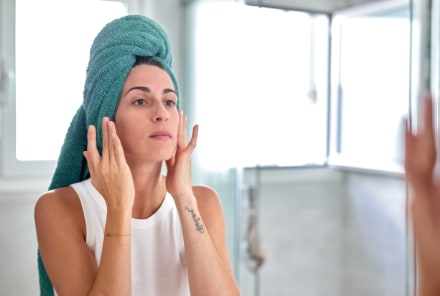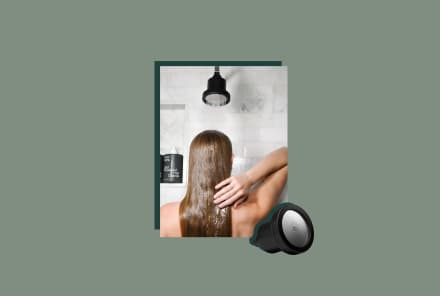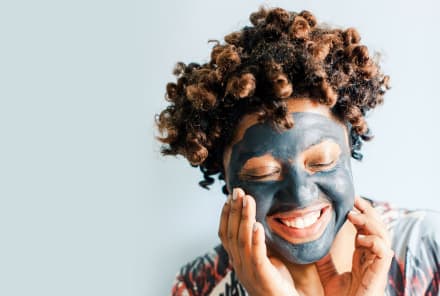Advertisement
Is Your Skin Care Stressed? Maybe — But That's Actually A Good Thing


Stress is no good for the skin—and this likely comes as no shock. How often do we discuss combating oxidative stress in the beauty space? Not to mention, the stress hormone, cortisol, can literally affect your skin barrier over time. But when your skin care ingredients themselves are stressed out—well, that may be a very good thing indeed. Read: a brighter tone and a healthier, more resilient complexion.
Stay with me here: In the food space, the more "stressed out" a plant is, the brighter colors it will have (think of a beautiful, multicolored heirloom tomato). Those spots reflect defensive molecules that make the plant more resilient—and when we consume those stressed-out plants, we're ingesting those healthy, resilient molecules as well. One study even showed that "wounding" the leaves of strawberry plants the same way insects do resulted in a higher concentration of antioxidant compounds1.
That same logic could apply to skin care, and it turns out, brands are already all over the idea—they call it wild-crafting.
What is wild-crafting?
As the name suggests, wild-crafted ingredients are harvested from foraged plants rather than farmed or cultivated botanicals. Their natural, wild environment leaves them unprotected from stressors (animals, unpredictable weather, intense sun exposure), but because they're able to fight off said aggressors without any human intervention (fertilizers, a consistent watering schedule, etc.), they wind up becoming more resilient in the process. It's the epitome of what doesn't kill you makes you stronger.
"Adapting to the elements on their own, these plants have to fight harder for survival," says Alpyn Beauty founder Kendra Kolb Butler, who harvests ingredients in the mountains of Jackson Hole, Wyoming. "This creates a strong, resilient, potent plant (and ingredient source)." For example, the wild huckleberries in Alpyn's cult-favorite polishing peel are rich in vitamin C—and their ability to flourish in a cold, unforgiving mountain climate can bolster those free-radical-fighting properties.
KYPRIS Beauty, another brand that utilizes wild-crafting practices, harvests their centella asiatica (commonly referred to as cica) extracts from Madagascar. "Only when collected from the wild does the plant develop a constituent profile that is cosmetically beneficial to skin," notes Chase Polan, founder, CEO, and lead alchemist of the brand.
One big caveat: Wild-crafting respects nature, first and foremost. Meaning, it doesn't give brands permission to pluck every plant out of the ground just because it happens to be wild-grown—rather, proper practices involve carefully harvesting the fruit or flowers (like an insect or animal would), leaving the plant itself intact. If foraging would compromise the plant's ecosystem in any way, it's best to leave it alone. "We use a combination of organically grown, wild-crafted, or lab propagated ingredients, selected based on whichever method—whether by nature or science—produces the best results and most gentle footprint," says Polan.
Do wild plants offer more skin care power?
Yes—in theory. "Wild-crafted, foraged ingredients are exposed to environmental stressors that traditionally harvested botanicals are spared from," says clean cosmetic chemist Krupa Koestline, founder of KKT Consultants. "Therefore, these stressed plants produce higher levels of antioxidants as a coping mechanism to deal with the stressors. Therefore, in principle, wildcrafted varieties have higher levels of beneficial antioxidants compared to traditionally grown."
That in principle mention is important: We don't have a ton of data right now when it comes to comparing wild versus organically farmed skin care. We do have science behind extremophile endurance technology2, where plants living in extreme, uninhabitable environments—the desert, depths of the ocean, the Arctic—can have some pretty potent benefits for the skin (read all about it here).
But what about wild-crafted ingredients that don't live in extreme conditions, like the bottom of the ocean? What about plants that are just a little more stressed by living in nutrient-rich, untouched soil rather than in nice, pretty rows on cultivated ground?
It certainly makes sense, but it's a wider-known concept in the organic food space—with topicals, the actual science isn't caught up quite yet. "I don't think it's a hypothesis that's been tested," says board-certified dermatologist Cynthia Bailey, M.D., founder of Dr. Bailey Skin Care. "That may be a 'cart before the horse' situation."
In other words: It's promising, but we do have some ways to go. Butler concurs: "We have only just begun to scratch the surface in regard to what benefits [wild plants] can bring to the surface of the skin when applied topically."
The takeaway.
Wild-crafted ingredients are making their mark in the skin care space. We're just beginning to dig through the science of it all, but nonetheless, we can agree that nutrient-rich soil begets nutrient-rich botanicals. Plus, these ingredients have had no exposure to pesticides or fertilizers—in fact, they've had no human intervention at all until harvest—and that alone can benefit your skin.
Shop these products.
Watch Next
Enjoy some of our favorite clips from classes
Enjoy some of our favorite clips from classes
What Is Meditation?
Mindfulness/Spirituality | Light Watkins
Box Breathing
Mindfulness/Spirituality | Gwen Dittmar
What Breathwork Can Address
Mindfulness/Spirituality | Gwen Dittmar
The 8 Limbs of Yoga - What is Asana?
Yoga | Caley Alyssa
Two Standing Postures to Open Up Tight Hips
Yoga | Caley Alyssa
How Plants Can Optimize Athletic Performance
Nutrition | Rich Roll
What to Eat Before a Workout
Nutrition | Rich Roll
How Ayurveda Helps Us Navigate Modern Life
Nutrition | Sahara Rose
Messages About Love & Relationships
Love & Relationships | Esther Perel
Love Languages
Love & Relationships | Esther Perel
